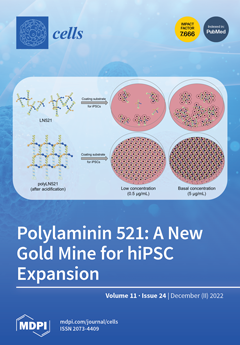Lactobacillus spp., as probiotics, have shown efficacy in alleviating nonalcoholic fatty liver disease (NAFLD). Here, we screened a new probiotic strain,
Lactobacillus salivarius SNK-6 (
L. salivarius SNK-6), which was isolated from the ileum of healthy Xinyang black-feather laying hens in China. We
[...] Read more.
Lactobacillus spp., as probiotics, have shown efficacy in alleviating nonalcoholic fatty liver disease (NAFLD). Here, we screened a new probiotic strain,
Lactobacillus salivarius SNK-6 (
L. salivarius SNK-6), which was isolated from the ileum of healthy Xinyang black-feather laying hens in China. We investigated the beneficial activity of
L. salivarius SNK-6 in a NAFLD model in laying hens and found that
L. salivarius SNK-6 inhibited liver fat deposition and decreased serum triglyceride levels and activity of aspartate transaminase and alanine transaminase. MBOAT2 (membrane-bound O-acyltransferase domain containing 2) was directly targeted by miR-130a-5p, which was downregulated in the liver of NAFLD laying hens but reversed after
L. salivarius SNK-6 treatment. Downregulation of MBOAT2,
L. salivarius SNK-6 supplementation in vivo, and
L. salivarius SNK-6 cell culture treatment in vitro suppressed the mRNA expression of genes involved in the PPAR/SREBP pathway. In addition, 250 metabolites were identified in the supernatants of
L. salivarius SNK-6 culture media, and most of them participated in metabolic pathways, including amino acid, carbohydrate, and lipid metabolism. Targeted metabolomic analysis revealed that acetate, butyrate, and propionate were the most abundant short-chain fatty acids, while cholic acid, ursodeoxycholic acid, chenodeoxycholic acid, and tauroursodeoxycholic acid were the four most-enriched bile acids among
L. salivarius SNK-6 metabolites. This may have contributed to the reparative effect of
L. salivarius SNK-6 in the NAFLD chicken model. Our study suggested that
L. salivarius SNK-6 alleviated liver damage partly via the miR-130a-5p/MBOAT2 signaling pathway.
Full article






